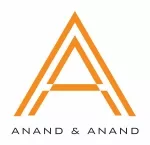The introduction of the Goods and Services Tax (GST) has been a very ambitious step for the taxation ecosystem in India. While the pros and cons have been debated ever since GST was introduced in the middle of the night on July 01, 2017 through a historic midnight session of both the houses of the Parliament, the classification of goods under the Central Excise Tariff Act, 1985 has a fascinating relationship with the classification of goods and services under the Trade Marks Act, 1999.
If similarities between goods were to be assessed as per the principles under trade marks law, it would be dependant upon many factors some of which are the nature and consumption pattern of end consumers, similarity or dissimilarity between trade channels, impulse vs. sophisticated purchasing by the customers, difference in pricing, informed customer vs. average customer and the like. However, the classification for GST purposes goes into a different detailing and in fact, draws parallels with parameters which ordinarily would be given a slightly different treatment under trade marks principles.
Very recently, according to the Madhya Pradesh Authority on Advance Ruling (AAR), the keyword “confectionary” was evaluated to understand whether it could include Indian sweetmeats and hence, be taxable at the slab of 12% or 18%, which is the usual slab for confectionary. The authority assessed that the term “confectionary” is derived from the word “confection” which means mixing things, which terminology could have a wide applicability and covers many products whereas a sweetmeat is neither confectionary nor a product of natural milk constituents. Eventually, the AAR ruled the GST slab at 5% for sweetmeats.
Irrespective, under the provisions of trade marks law, there would be high chances of confusion for a similar brand for confectionary and sweetmeats.
In fact, recently, the Himachal Pradesh High Court held that rusk (a light, dry biscuit or piece of twice-baked bread, especially one prepared for use as baby food) is actually bread minus the moisture and is exempt from Value Added Tax (VAT). On the contrary, the Meghalaya High Court had earlier held that rusk was different from bread and hence, there would be no tax exemption from VAT. VAT has been subsumed in GST and hence, is critical. The issue now stands to be decided by the Supreme Court but assuming an assessment were to be made to assess similarity in goods as per trade marks provisions, it would be a foregone conclusion that rusk and bread would be considered to be similar goods.
The Supreme Court (the apex court in the country) went through a similar evaluation in ShreeBaidyanath Ayurved Bhavan vs. Collector Of Central Excise, AIR 1996 SC 2829. Baidyanath claimed that the Dant Manjan Lai (herbal toothpaste) manufactured by them would qualify for exemption from payment of excise duty being an ayurvedic medicine and being a scientific medicine. Baidyanath claimed that the primary ingredient in the product is red earth to the extent of 70% which has a cooling quality. The Customs Tribunal rejected this claim indicating that the red earth is largely used as a filler or a colouring agent and is not described as medicine in the common parlance. The Supreme Court upheld the order of the Tribunal and disallowed Baidyanath from claiming such tax exemption.
However, if trade mark principles were to be considered and an assessment on confusion and deception had to be made, in all probability, these would be considered as goods of similar description.
This judgment was recently relied upon in the matter of Commissioner of Central Excise vs. Madhan Agro Industries (I) Private Limited, 2018. The dispute was regarding classification of coconut oil in packaging of different sizes as also inscription on the product between “edible oil” vs. “hair oil”, both of which products are classified separately and also have different tax percentages.
The assessee's product did not have any inscription indicating that the product was being used as hair oil and they were claiming a tax bracket applicable on coconut oil. The assessee even pleaded that in the absence of any proof that the product was to be used on hair and simply because the packaging was smaller, they could not fall under the tax bracket for hair oil. The Supreme Court made an observation that the issue of registered trade mark and classification for the purpose of levy of tax are unrelated to each other and that registration of a trade mark under any particular class cannot be determinative of the classification of the product for tax purposes. The Court held in the favour of the assessee since the product packaging did not specifically mention that the oil was to be used specifically as hair oil. The Court made an additional observation that the assessee had, in addition to securing registrations for hair oil, also had registrations for edible oil. As this was a divided judgment, the Judges decided to put up the issue before the Chief Justice of India.
Comparison under trade mark provisions at times entails drawing parallels from other legislations to understand the scope of goods and their technical characteristic, however, many times, the possibility of confusion may be so high that goods may still be considered similar.
In another interesting judgment of Alpine Industries vs Collector Of Central Excise, 2003, the question before the court was whether Alpine's product under the trade name “Lip Salve” is a “preparation for care of skin” or a “medicament”. Both these products are classified separately under the Central Excise Tariff Act as also under the Trade Marks Act. Alpine, of course, claim exemption and claimed that its product was a “medicament”.
Various precedents under trade marks law do give precedence to the fact that if the nature of the product is sophisticated, the test of average person's assessment can be done away with. However, classification under the Central Excise Tariff Act indicates that products have to be understood basis their popular meaning. The Court relied on the assessment made by the Tribunal by indicating that it is a matter of common knowledge that chapping of lips occurs because of dryness in the air and cold weather and is not necessarily limited to places with high altitudes as Alpine had mentioned in its literature that product is supplied to soldiers posted in high altitude areas and that the product was manufactured in accordance with Defence Services Specifications. The Court also relied on the Baidyanath judgment and specifically indicated that ‘ordinarily a medicine is prescribed by a medical practitioner and it is used for a limited time and not every day unless it is so prescribed to deal with a specific disease like diabetes.” The Court outrightly applied the “Commercial Parlance Theory” and classified the product as a “preparation for care of skin” and not as a medicament.
This is interesting as this creates a demarcation between cosmetic products falling under class 03 as opposed to medicinal products which fall under class 05 as per the trade marks classification, which, on many occasions have been considered as overlapping classes.
An analysis of the above again raises the point that while products could be categorised very differently for taxation purposes, under the trade mark principles, parallels between sweetmeats and confectionary could be very easily drawn especially in a country like India, where at a sweetmeat shop, it is not uncommon to buy bakery products or chocolates too.
The content of this article is intended to provide a general guide to the subject matter. Specialist advice should be sought about your specific circumstances.

